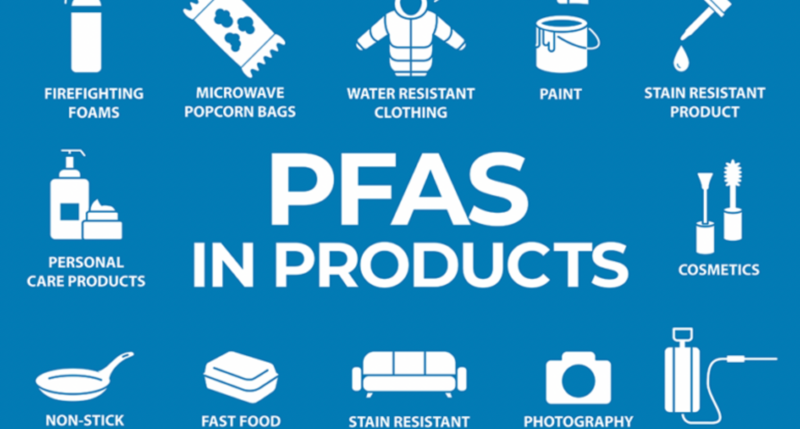New Jersey Wins $2 Billion Settlement From DuPont Over PFAS Contamination
Published on by Water Network Research, Official research team of The Water Network in Business
New Jersey Wins $2 Billion Settlement From DuPont Over PFAS Contamination
9 hours agoSteve Hanley

PFAS substances — per- and poly-fluoroalkyl substances — are commonly known as “forever chemicals” because they do not break down naturally for hundreds or thousands of years. There are tens of thousands of them invented by the chemical industry and all are characterized by strong carbon-fluorine bond. They are used in various products due to their water- and grease-resistant properties, such as:
- Food packaging: Takeaway containers, pizza boxes, and popcorn bags.
- Non-stick cookware: Pans and utensils.
- Textiles: Waterproof clothing, carpets, and mattresses.
- Cosmetics: Sunscreens, foundations, and hair conditioners.
- Fire-fighting foam: Used to extinguish liquid fires.
- Drinking water: Contaminated by industrial discharges and firefighting activities.
Studies have linked PFAS exposure to various health problems, including increased risk of some cancers, lower fertility, and developmental problems in children. So it should come as no surprise, given the massive incompetence of the failed US administration, that it has revoked nearly $15 million in research into PFAS contamination of US farms.
That decision will bring an end to scientific studies that public health advocates say are essential for understanding how the widespread used of PFAS chemicals is contributing to food contamination. But for the MAGAlomaniacs, preserving corporate profits is more important that protecting the health of US citizens, and so those funds get smeared with the “government fraud and waste” label so the ultra-wealthy can pay less in taxes.
PFAS And Food Production
Researchers in recent years have begun to understand that pesticides laden with PFAS chemicals and sewage sludge that gets used as fertilizer on farms contaminate the soil with forever chemicals which get taken up by growing crops and wind up in nearby bodies of water, according to The Guardian .
Sludge is a mix of human and industrial waste that is a byproduct of the wastewater treatment process which the EPA allows to be spread on cropland as “biosolid” fertilizer because it is also rich in plant nutrients. But public health advocates have blasted the practice because the nation spends billions of dollars annually treating water only to take this toxic byproduct, insert it into the food supply, and re-pollute the water.
The pressure on the government over forever chemicals is intense for much the same reason emissions from burning fossil fuels raise the hackles of industry lobbyists — profits. But what the federal government refuses to do does not limit what the states do to protect their citizens.
A History Of PFAS
Truthout reports that New Jersey has won what officials there say is the largest environmental settlement ever achieved by a single state. In that settlement, DuPont and its affiliates agreed to pay $2 billion to clean up four industrial sites contaminated with forever chemicals. It is the third PFAS related settlement New Jersey has reached in less than three years.
Mariah Blake is an investigative journalist who has been researching forever chemicals and has written a report published by the New York Times . She spoke with Amy Goodman of Democracy Now! recently about the history of PFAS chemicals.
“This class of chemicals, that are now ubiquitous in the environment and consumer goods, was actually developed by the US government as part of the Manhattan Project. The reason the government needed them is for uranium enrichment, [which] involved a highly corrosive chemical called uranium hexafluoride. Almost nothing could contain it, and so they needed substances that could stand up to this chemical. They determined that the only ones that could were ones that combined carbon and fluorine, which together form the strongest bond in chemistry.
“It was clear from the beginning that these were dangerous chemicals. The plants where they were produced commonly had fires and explosions. Workers … were constantly being hospitalized with breathing problems and chemical burns. Around 1943, farmers downwind of this plant in New Jersey began to complain that their peach crops were burning up, that their cows were so crippled, they couldn’t stand. They had to graze by crawling on their bellies. In some cases, farmers were also falling ill after eating the produce that they picked.
“The farmers’ complaints really alarmed Manhattan Project officials…. In 1943, they launched the secret medical research program that researched the health effects of various Manhattan Project special materials. [Those] scientists had determined, as early as 1947 that these chemicals were highly toxic and that they were accumulating in human blood.
“One of the things that makes these chemicals so harmful is that they build up in human blood, and they stay there for a long time. This program continued after the war under the auspices of the Atomic Energy Commission, and by 1970, scientists within this program had determined that PFAS were accumulating in the blood of people all over this country.”
Did they teach you this stuff when you were in high school? No, me neither. Blake had more to say on her research — much more.
“After the war, 3M acquired a license to produce PFAS, and it hired Manhattan Project chemists to develop them for use in … manufacturing … and consumer goods. One of the first PFAS-based products was Scotchgard, the fabric protector.
“Those two companies also began studying the health effects. As early as 1960, they knew these chemicals were toxic. As early as 1970, they knew they were accumulating in the blood of people all over the United States. They subsequently examined thousands of blood samples from people all over the world, including remote rural China. The only samples they could find that didn’t contain these chemicals were collected from Korean War vets before 1952.
Taxonomy
- Waste Water Technology
- Chemical Company
- Chemical Treatment
- Chemical Analysis
- New Jersey, United States
- PFAS
- Water Treatment Chemicals